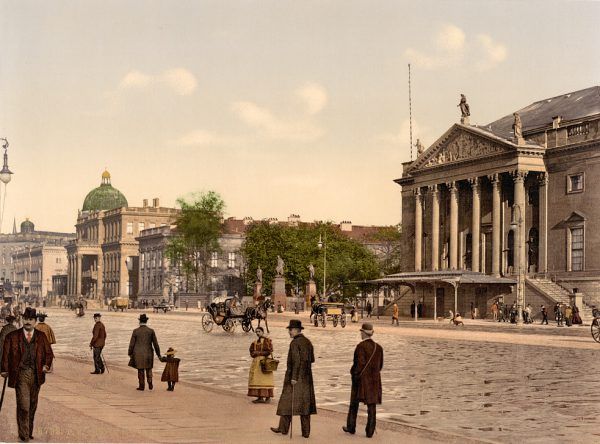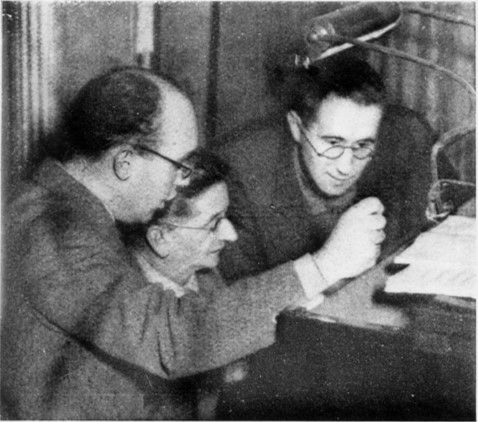Berlin And Modernity
1927-1933

Berlin And Modernity
1927-1933
« On doit admettre que la direction de Zemlinsky fait toute la différence. […] Il a finalement libéré la musique de Weill du malentendu de l’élan, du jazz, et du divertissement diabolique, et il a montré son essence véritable, son bouillonnement, sa stridence, puis sa tristesse mortelle, son fond décoloré, brusquement détouré afin de révéler tous les craquements et les écarts, qu’un public en quête de chanson préfère ignorer : par-dessus tout, il arrache le son du misérable bain des instruments, son qui possède une puissance expansive qui laisse loin derrière celui de plus grands orchestres ; tel est le son lorsqu’il est réalisé par Zemlinsky. »
Theodor Adorno, Musikblätter des Anbruch, 1931
The audacities of Pre-Raphaelite and Secession aesthetics seem rather dated in hindsight. When we look back on them today, we experience a special tenderness for works of another time, which appeared to be edging towards modernity before modernity upended them.
When Alexander Zemlinsky became music director of the Berlin Kroll Opera in 1927, he entered a new world, for which the Munich Künstlertheater had provided a foretaste and Prague had been a threshold. In Prague, a few months before he moved to Berlin, he had called upon the talents of the Ukrainian constructivist scene designer Michaïl Andriienko (1894-1982) for a production of Cardillac by Paul Hindemith (1895-1963), who became a professor at the Berlin Conservatory in the autumn of 1927.
But Zemlinsky’s commitment to this new direction went further still in Berlin, where he met the painter, photographer, and art theoretician Laszlo Moholy-Nagy (1895-1946). Starting in 1926 Moholy-Nagy gradually gave up painting for photography and theatre sets. In 1928 he left the Bauhaus school, where had taught for the previous ten years under Walter Gropius (1883-1969), the second wife of Alma Mahler, who would later leave him for Werfel.
While his style was a far cry from Viennese neo-romanticism, Moholy-Nagy nevertheless revived the foundations of Romantic aesthetics: in his view, opera enabled him to return to the Wagnerian idea of a “total work of art” (Gesamtkunstwerk) that guaranteed true continuity between art and life. Moreover, in 1925 he expressed the wish to create “an optophonetic art that will allow us to see music and simultaneously to hear images.”
Moholy-Nagy created the costumes and sets for Offenbach’s Tales of Hoffmann, which Zemlinsky conducted in 1929, in the same spirit. His sketches testify to his ambitions and to the possibilities the project offered. From a distance, his sets look like abstract paintings in which the coloured segments of each geometrical element float in space. Up close they depict, through views that are most often cavalier, a precise and rigorous stage décor, which bears witness to Moholy-Nagy’s staggering inventivity, all the more so in an Offenbach opera, albeit a fantastic one.
Along with Fritz Zweig (1893-1984) and Otto Klemperer (1885-1973), who was the Kroll Opera’s director, and although he was of an earlier generation, Zemlinsky (who premiered Ernst Krenek’s highly renowned opera Jonny Strikes Up in Prague just a few weeks before leaving that city) established himself as one of the leaders of the Berlin avant-garde.
At the same time, in 1929, Zemlinsky composed his Symphonic Songs (Symphonische Gesänge, op. 20). This work was based on a collection of poetry by the African-American authors of the Harlem Revival, of whom Langston Hughes (1902-1967) is undoubtedly the best known, and which had recently been translated into German. Although the Songs were not premiered until 1935 in Brno, by Heinrich Jalowetz, Zemlinsky’s former assistant in Prague, they ushered in a new phase in Zemlinsky’s work. One of Hugues’s poems describes the “great dark city” the poet had left behind, which anticipated the fictitious city of Mahagonny, on which Bertold Brecht (1898-1956) and Kurt Weill (1900-1950) would collaborate with Hugues in 1946, resulting in Street Scene, which was made into an opera in 1930 before Zemlinsky took it on the following year.
From Big City to Cesspool
The Berlin premiere of Rise and Fall of the City of Mahagonny in 1931 (it had premiered in Leipzig the previous year) did not take place at the Kroll Opera, but in the Theater am Kurfürstendamm. In the glowing article he wrote about the work, Theodor Adorno echod the feelings of Weill, who concluded a letter written in late 1931 with “Zemlinsky is absolutely top class!!!” The sets and costumes of Brecht’s habitual stage director Caspar Neher (1897-1962), did not contain the same formal radicalism as Moholy-Nagy’s, and unlike the latter’s expressionism they displayed visionary violence. Less than two years after the staging of Brecht’s work, some of these visions began to become realities in Nazi Germany.
Like the Bauhaus, the Kroll Opera was of course not spared this invasion of reality by myth. The businessman Joseph Kroll, who built the private opera in Berlin in 1844, originally envisioned it as an entertainment venue on the edge of the Tiergarten. In the late nineteenth century the theatre came under the control of the Prussian state, which began to remodel it in 1914. The war caused a long interruption in the work, and in 1925 the Kroll Opera finally reopened under the new name of Staatsoper am Platz der Republik (The State Opera of Republic Square) with Otto Klemperer as its director.
Klemperer recruited Zemlinsky, among others, for the new venture, and he relocated from Prague to Berlin with a certain number of his musicians and colleagues. Zemlinsky planned a bold season that distanced the Kroll Opera, as it continued to be called by Berliners, from the other state opera house, Unter den Linden. But in 1931 Germany was no longer able to subsidize the Kroll Opera, and it closed the same year.
Its fate would be a sad one. When the Nazis burned down the Reichstag on 27 February 1933, the German parliament was transferred to the neighbouring Kroll Opera, and it was here that Adolf Hitler obtained unlimited authority through the Enabling Act. Until 1942 the building was the site of many official Nazi assemblies. It was destroyed during a British air raid in late 1943. Along with the Viennese synagogue on the Zirkusgasse and the Munich Künstlertheater, the Kroll Opera was the third place closely closely associated with Zemlinsky that was destroyed by the Nazis and the war.
The day after the Reichstag fire, at a meeting of the Berlin Academy of Arts, Max von Schillings, the conductor and composer at the head of Berlin’s State Opera house, announced that the Jewish influence on German art would immediately be destroyed. Arnold Schönberg was present. He left the meeting and went into exile in Paris, where he converted to Judaism. Although the two men did not often meet, Schönberg urged Zemlinsky to do the same, but Zemlinsky did not follow up.
In mid-April 1933, however, a few days after the publication of a list of composers, performers, and conductors who were immediately dismissed because they were considered to be Jewish (it included the names of Klemperer, Schreker and Schönberg), Zemlinsky and his second wife Luise returned to Vienna. In 1940 an updated list described him as “half-Jewish”.
Two years earlier in Düsseldorf, an exhibition of “degenerate music”, similar to Munich’s exhibition of “degenerate art”, had been organized. Its poster, which vilified the “Jewified” influence of Afro-American jazz, parodied the poster of Krenek’s opera. While he must have been horrified by the events beginning in 1933, Zemlinsky probably did not imagine the “dark times” that would descend upon Austria five years hence, especially since the circumstances, terrible though they were, finally brought him back to Vienna.


